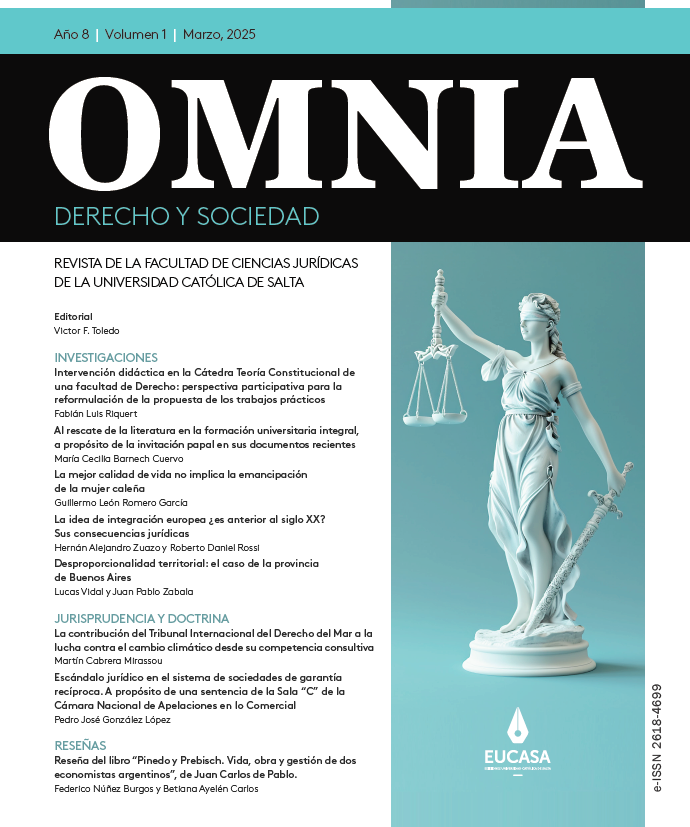Crónica de una prisión anunciada
Abstract
The purpose of this article is to try to exhibit and demonstrate from a real case the consequences of the existing tensions between the powers that emerge in Law 26061 (Comprehensive Protection of the Rights of Children and Adolescents) in favor of the administrative bodies conceived as executing authority and those legally assigned to criminal judges by Law 22278 (Minority Criminal Regime).
Specifically, the purpose is to exemplify how passivity and inaction —which are often hidden under the guise of an overlap of powers provided for in the various laws that come into play, which in reality is not the case— conspires against the best interests of the child for which the State must ensure (article 3 of the Convention on the Rights of the Child of constitutional hierarchy as provided in article 75, paragraph 22 of the National Constitution).
Downloads
References
● C.S.J.N. Fallos 331:2691 “García Méndez”, 2 de diciembre del 2008.
● Ley 22.278 Régimen Penal de la Minoridad, 25 de agosto de 1980.
● Ley 26.061 Ley de Protección Integral de los derechos de niñas, los niños y adolescentes, 26 de octubre de 2005.
● Observación General 10/2007 y 24/2019 del Comité de los Derechos del Niño, 18 de septiembre de 2019 y 25 de abril de 2007.
● Opinión Consultiva 7/2002 de la Corte Interamericana de Derechos Humanos, 28 de agosto de 2002.
● Reglas mínimas de las Naciones Unidas para la administración de la justicia de menores (Reglas de Beijing), 29 de noviembre de 1985.
● Resolución P.G.N. 46/00 de la Procuración General de la Nación, 30 de agosto del 2000.
● Terragni, M., 20 de abril de 2023, De la actividad y organización judicial respecto de niños y niñas inimputables en razón de su edad, La Ley, año LXXX VII N° 74
Copyright (c) 2025 Manuel Espinal

This work is licensed under a Creative Commons Attribution-NonCommercial-ShareAlike 4.0 International License.








